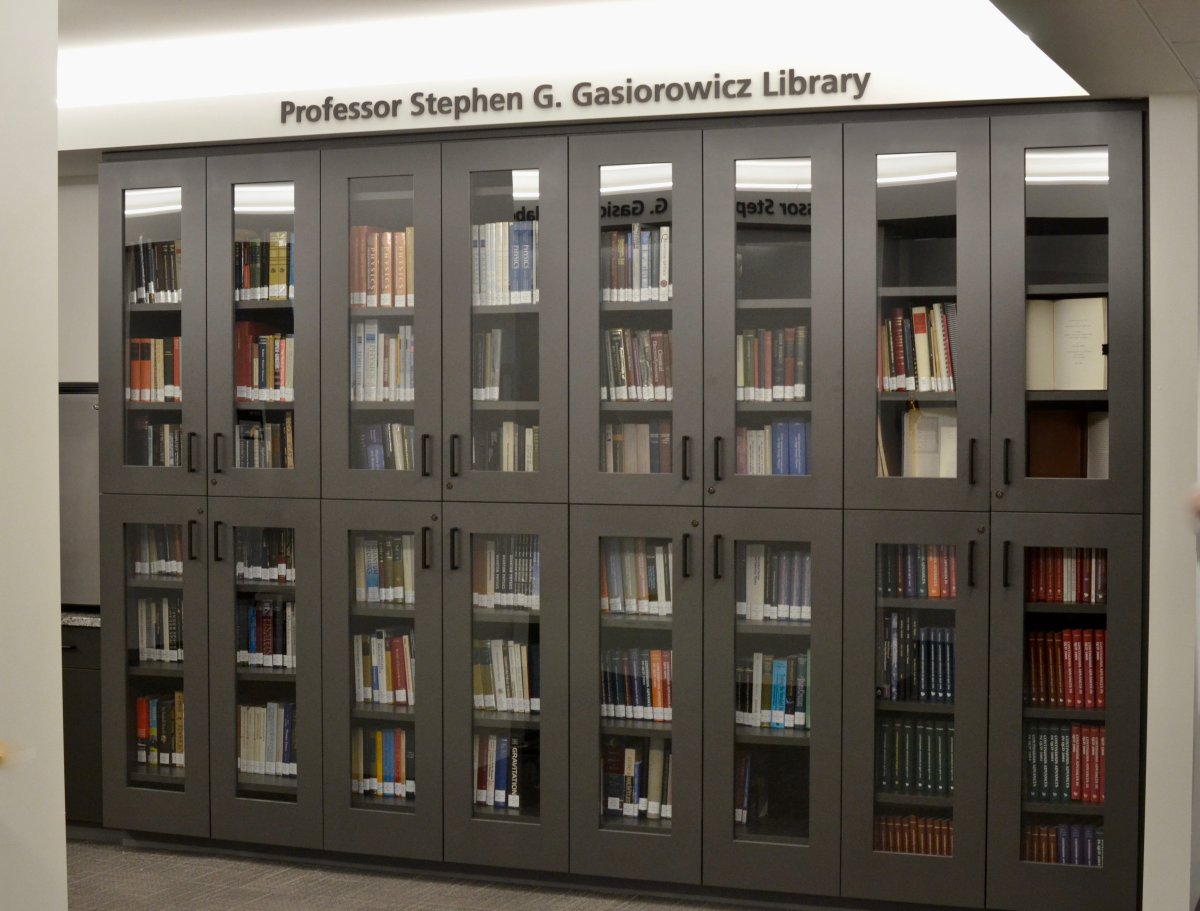Stephen G. Gasiorowicz

Upon his passing, Professor Gasiorowicz donated his library of physics texts to the Institute. A dedication of the space was held on March 7, 2018 in conjunction with the Grand Opening of John T. Tate Hall. The books are available for faculty and students to check out.
Stephen G. Gasiorowicz (1928-2016)
Stephen Gasiorowicz, best known for his contributions to the quark model of hadrons, the theory of glueballs, and to mechanism of QCD confinement; and for his role as one of the founding fathers of William I. Fine Theoretical Physics Institute, died on June 3, 2016.
Stephen was born on May 10, 1928, into a Jewish family in Danzig (currently Gdansk, Poland). Between 1920 and 1939 Danzig was a semi-autonomous city-state populated to a large extent by ethnic Germans. Stephen’s father was a merchant.
With the rise to power of Hitler and Nazis in Germany in 1933, persecution of non-Germans in Danzig increased and Gasiorowicz’s family had to move to Warsaw. Europe entered the era of great social cataclysms which culminated in Holocaust and other innumerable atrocities of German Nazis.
When Germany invaded Poland in September of 1939, the Gasiorowicz family had to flee immediately; the only open route was to the East of Poland, to Lemberg (currently Lviv, Ukraine). A few dozen miles outside Lviv they were met by a detachment of the Soviet Army which occupied the eastern part of Poland.
Stephen’s journey to freedom that started in occupied Poland ended only in 1946 in the US. During the intervening seven years, the family moved through the USSR, Romania, Turkey, Iraq, Pakistan and India, where Stephen’s father died. The family obtained residence permits in British-controlled India, which was allied with the Polish government in exile. While in India, Stephen attended a Catholic school and then a Liceum.
In 1946, the family was notified that their application for immigration to the US, which they had filed before the war, was finally approved. The same year Stephen sailed from Calcutta to San Francisco with his mother and sister and was admitted to UCLA as a physics major. He received his BA degree from UCLA in 1948 and PhD in 1952.
From 1952 till 1960 Stephen was employed by the Lawrence Berkeley Laboratory at the University of California, as a research staff member. In 1960 he received an offer of associate professorship from the Physics Department of the University of Minnesota, and in 1961 he moved to Minnesota where he stayed for the rest of his life. In 1963 he was promoted to full Professor.
Stephen acquired a reputation as an excellent lecturer and was sought-after as a visiting professor by major research centers. In 1964 he spent a semester at NORDITA (Denmark), then a year in DESY (Germany) in 1968-69, and a subsequent visit to DESY in 1980, a semester at the University of Tokyo in 1982, and so on. From 1979 till 1986 Stephen was Vice-President and a Member of the Aspen Center for Physics, Aspen, CO, and in 1987-89 the Acting Director of FTPI.
Stephen’s legacy in physics education spread worldwide. Generations of physics students have studied with hist textbooks which include Elementary Particle Physics, Quantum Physics, and Physics for Scientists and Engineers. He was a PhD adviser to such prominent physicists as Stanley Brodsky (SLAC) and William Bardeen (Fermilab).
Stephen retired in 1997. After retirement he continued working on textbooks and was an active member of the FTPI Oversight Committee. He also gave popular lectures at the Osher Lifelong Learning Institute.
Stephen was a real intellectual and humanist with a broad knowledge of literature and arts. Stephen’s sense of humor was remarkable and he is remembered as a great story-teller and could find a joke for almost any occasion. Stephen was absolutely great as a friend, always ready to help. He will be missed tremendously.
by Misha Shifman and Arkady Vainshtein
